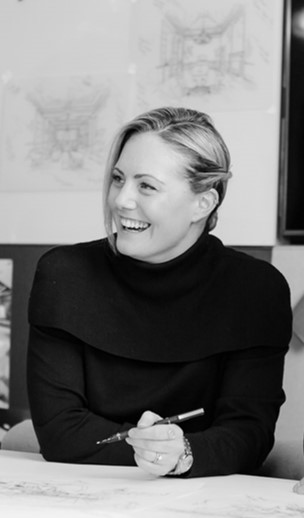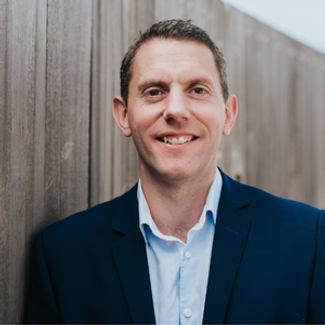As part of our Women in Workplace Design, we interviewed Kathryn O’Callaghan Mills, Design Director at Area.
Kathryn’s love of art and design started at an early age. After finishing school, Kathryn followed in the footsteps of some of the UK’s most famous designers including Stella McCartney and Alexander McQueen and was accepted onto a course at Central St Martin’s College in London.
“It was an amazing experience, I learnt about so many elements of design including Fashion, Illustration, Graphics, Interiors and Product. It opened my eyes to what a creative career could be.”

Kathryn continued her education by studying for a degree in Furniture and Product Design at Nottingham Trent. This course offered her the opportunity to do an internship after completing the second year of the course.
“At this time, we weren’t paid to do our internships like many students are today. We simply saw the value of gaining first-hand knowledge of working in practices and how we could use the experience to improve our work in our final year and future career. The internships I completed shaped my career and I will always be grateful for the opportunities I was given.”
We wanted to find out if Kathryn felt supported getting into a creative career and how she thinks it is for young people today. “In our current times I feel that the creative industries are embraced and respected, they may be competitive to get into but this is a sign of how far the industries have come. I grew up attending a very traditional school that provided one creative course in Fine Art, you either painted or you didn’t! Luckily I liked to paint and they were incredibly supportive of my love for the subject and actively encouraged me to continue pursuing it. Today, Art, Design and Creative options are widely available, to the point where it might be quite confusing for young people to know what to choose from. It’s important not to feel limited by a course or degree, your talent can be adapted.”
We probed further and asked if Kathryn felt choosing the right creative course with so many available was imperative to a successful career. “I think in the past you could choose a course that you wanted to do but it didn’t necessarily mould your future. Some practices today will want you to have completed your education in a specific subject to even be considered. However, at Area, we don’t just look at Interior Design students for our internships. We’ll consider students from backgrounds such as Lighting and Product Design too.”
Many young people want to find out how they can best find their first job or internship. Kathryn explained how she found her first paid role. “After graduation, I found a temping role as a receptionist in a Design practice in London. After two months in this position, I finally worked up the courage to speak to the Managing Director. I told him that this wasn’t what I wanted for my career, I wanted to do what the Designers were doing. I explained my background, experience and love for design and it paid off. I was offered my first paid position as a Designer."
Using this innovative approach proved successful for Kathryn and she explained why thinking outside of the box might help young people find their first job or internship today. “Practices want to understand the real essence of you and an email enquiry can’t achieve this. Working with recruitment agencies like FRAME and applying for jobs online is still a great way to find a job. However, practices aren’t just looking for someone with knowledge, that is a given nowadays. Trialling other job hunting methods can be a great way to show your personality and drive for success, give yourself the best opportunity to shine.”
Kathryn’s career has gone from strength to strength and she is now a Director of a practice. With her wide industry experience, we asked whether she thought the industry did enough to support women who wanted to start a family. “I think it really depends on the business you have joined. Practices are in the same industry but their culture and values differ. When I first started out, enhanced maternity schemes just did not exist and statutory pay was the only option.”
We continued by asking if she thought things were different in her practice, Area. “We have worked hard to develop a package that supports our staff as well as offers flexibility in their work when they return. We want to make it ok for our staff to want to have a family, secure in the knowledge that their job will still be there. We see our staff as valuable talent in our business and that we will still assist them in their career whilst also having children. It is so important for us to be flexible, we don’t want to assume that the responsibility of a child is just on the mother. This is why we also offer split leave to our employees, equality is paramount to a progressive business.”
There has been much talk in the media that more flexibility in the workplace, as well as better maternity benefits, are down to an increase in females in the boardroom. We asked if Kathryn agreed with this. “I don’t just think it is about having more females on the board to improve working conditions and benefits. I believe the best mix includes a good representation of different genders, ages, ethnicity and cultural backgrounds. If you want your business to be forward-thinking and to attract the best talent, you have to be open-minded.”
After many years of working in the industry, we asked Kathryn if there were any downsides to a creative career. “It goes without saying if you enter a creative industry you enter with passion. It is hard work, long hours and can be a difficult industry to get into, persistence and self-belief are key. You have to give it your all and the competition will always be high. However, the positives always outweigh the negatives, surround yourself with those you respect and can learn from – embrace their support and take yourself forward.”
We finally asked whether she would recommend her career to young people. “I feel incredibly lucky to do something that I love for a living. Every day is enjoyable, and quite often a challenge, which I thrive on. When you work in the creative industry, it is part of your soul. You put so much into every design, it is as if a little piece of you goes out of the studio with each design. It is the passion within the very successful designers that differentiates them and I would encourage any aspiring designers to take the leap and find their path.”
We would like to say a huge thank you to Kathryn for taking the time to speak to FRAME and provide her insights.
Join the conversation with FRAME Recruitment
Follow FRAME Recruitment on LinkedIn, Facebook and Twitter for the very latest news, updates, exclusive insights and regular hot jobs in the architecture and interior design sectors.







